Glasses-free 3D displays for Smartphones, Laptops and Computer Monitors
Humans, along with numerous other animals with forward facing eyes, are proficient at seeing three-dimensional pictures through the use of stereoscopic (also described as stereographic) vision. Each of your eyes, which are 60 to 70 mm (2.5 inches) apart, captures its own likeness on the retinas behind each eye. When you focus on a distant scene or image, each eye has a slightly different view of it. Your left eye see a little more along the left edge of the object, and your right eye more on the right side. Your brain mechanically processes these data to produce a combined image that includes the extra bits on each side and you see it as a 3D view. The 3D movies are made with multiple cameras to generate the 3D images in a similar way.
New 3D Image Technology for Monitors
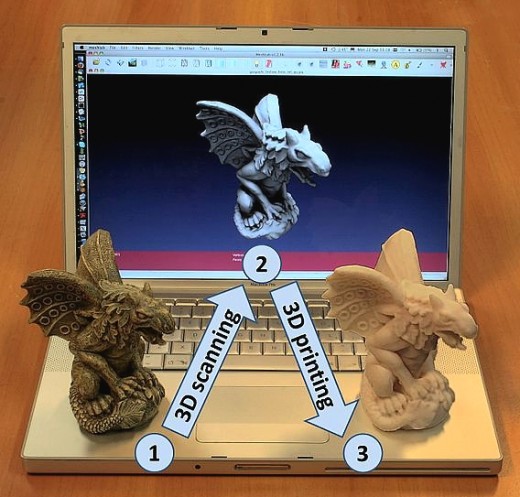
3D Image Examples and Methods
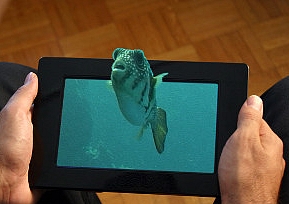
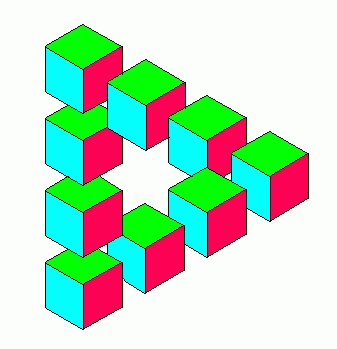
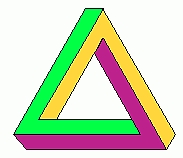
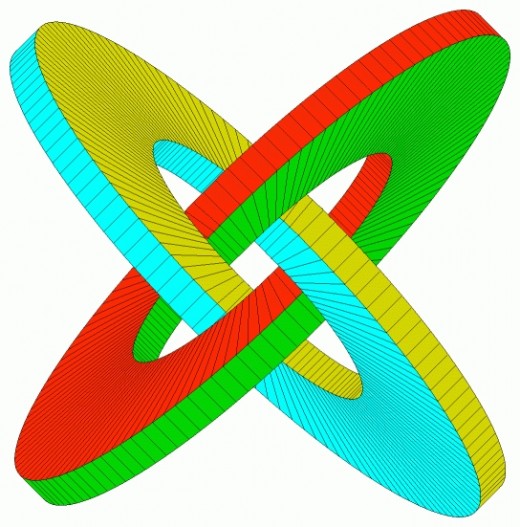
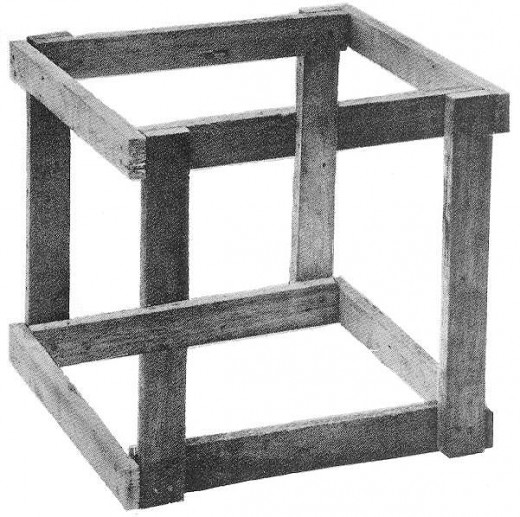
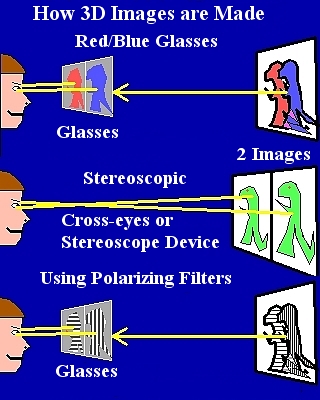
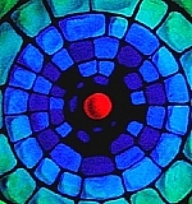

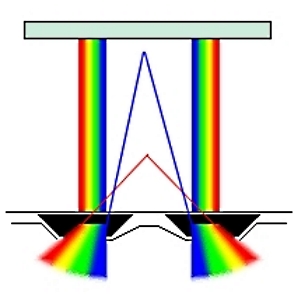
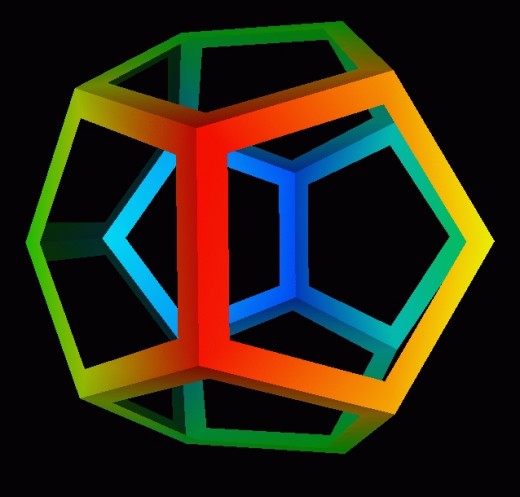
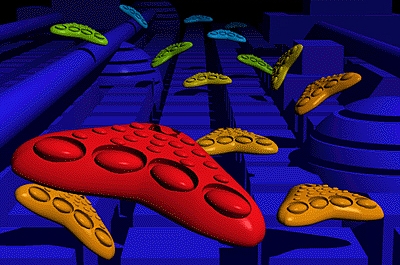

Three-dimensional videos and images work by providing your left and right eyes with a distinct image. In this way the two flat pictures your eyes see become a 3D the illusion of the image on the scree. Partially this depends on finding ways to deliver different images to each eye to simulate a stereo view. It also depends on the brain processes that tend to 'fill in the gaps' and form an image of what they are seeing and this leads to various illusions.
Two-dimensional drawings (on a flat surface) can be made to express an illusion of three dimensional reality. The classic demonstrations of this shown in the pictures where on close examination disclose interior contradictions. When you gaze what you glimpse flips between diverse states.
For images of coloured shapes on a black background various colour appear to be behind each other with blue appearing well back and red appearing on top. The sequence of the colours follows that of the light spectrum from blue to red.
There are several ways to create a 3D effect on a film or on a screen. For films the 3D effect is created by filming the scene with two or more cameras that are slightly displaced to generate the 3D view. For flat screens and TVs it is a simulation from a single image.
► The first method employs glasses with red/blue lenses that filter the lights so that the left and right eye see parts of the image coded with shades of blue or red.
The images have additional blue and red elements. The brain combines what is seen by the eyes and uses the slight differences to produce three dimensional images. This disadvantage of this method is that it only affects red and blue, and you have to wear the glasses. The images appear distorted and unclear without the glasses.
► The second method is to get the eyes to focus on two images placed side by side and by crossing the eyes, the images can be interposed on top of each other to generate the 3D picture.
This method preserved the full colour of the images and no technology is required. The disadvantage is that it takes some practice to get the necessary coordination to make it work unless you use an instrument called a stereoscope. This device is used to view aerial photographs using stereo views.
► 3D films often use polarization filters to generate different images instead. Special polarizing filters in the projector polarize the light in different planes for the left and right images.
The viewer's glasses have one lens polarized vertically and the other horizontally so that each eye sees only the appropriate image. This method allows full colour pictures, but it requires both special projection equipment and special glasses.
► A 3D illusion is created by flicking between 2 images that are taken from slightly different perspectives.
This approach is often called wiggle GIFs, but at high speed the flashing cannot be seen.
ChromaDepth glasses have tiny optical prisms which bend the colours differently to produce stereo parallax based on colour. Red comes forward and blue moves back in the image. As shown in the image the blue light passes without deviation through the mini prisms, green light gets bent slightly, yellow light even more, and red light is bent the most. The opposite lens for the other eye refracts the light in the opposite direction. Changing the angle of light from a coloured object before it reaches the eye create the illusion that the object in the image is closer, and that the light of various colours appears to come from closer or further away generating the 3 D effect.
► Some recently developed computer systems use special glasses and screen with synchronous "blinking" to generate 3D images on the monitor.
As the viewer watches the screen each lens of the glasses he wears flicks the shutter open and closed so the viewer can only see one image on the screen at a time. This blinking action on the screen and glasses is coordinated to deliver separate images to the viewer. The blinking action occurs so quickly, about 30 times a second, that the viewer doesn't see that shutter action. However this method is complex requiring hi-tech glasses.
In a virtual reality helmet each eye see a separate small monitor generated from the computer producing the 3D images. Since the computer can also check the position of the helmet what is displayed can be changed continuously. This creates the illusion that the viewer is moving through a computer generated world, a virtual reality.
► Stereoscopic vision is just one way we can detect the distance of an object. The brain also uses "focal" distance of an object to estimate position. The brain uses the eye focus mechanism to estimate how far the object is away. This focal method is far less accurate than the stereoscopic vision method. Finally, the brain estimate the size and position of objects from previous experience of how their size compares with previously known objects. This gives us the perspective to interpret images in photographs and scenes.
Glasses Free 3D Simulation
New techniques for 3D simulation on screens for iPhone, iPad, laptops, computer monitors and TV broadcasts use methods that do not require the need special glasses. Instead, they use optical technology built into the display to send different views to the left eye and right eye or to simulate that effect.
Glasses-free 3-D effects are much easier to generate on a small, portable screens such as mobile phones, iPads and laptops than on a large, stationary ones because the image can be delivered at a certain focal location ('sweet spot'). The viewer can be relied on to adjust the angle and position of the display by hand to take advantage of the 3-D view. The 3D images seem to pop out of the display and it particularly attractive for sports and action videos and for advertising.
There are various technologies that are being developed:
- Microsoft is working on a system for an auto-stereoscopic display that uses cameras in the display locate where the view is located. It then generates direct narrow beams of video to each eye. Separate beams with a refresh rate of 60 hertz are produced for each eye. The Microsoft team is now developing a version with 4 beams of light, so that 2 people can watch 3-D shows or play games. Two users could even watch different TV show on the same TV using this method.
- The 3M company is developing an adhesive film that has tiny prisms that creates a glasses-free 3D display. It relies on back-lighting control with the film that sends parts of an on-screen image to the left or right eye through the prisms.
- The HoloToy application for iPad offers a simulated 3D effect. It uses an illusion method based on the angle of the device, that tricks our brains into seeing a sense of depth. The app comes with several games, including a game known as HoloBall, that requires you to try to direct a ball through a 3D room.
- The Firemint's Flight Control app gives you a 3D gaming experience using the anaglyph 3D images, that require the user to wear the red-and-blue glasses to get the 3D effect.
- The Sharp company is developing new 3D screens that use a parallax filter technology (polarising filter type device). This uses a pattern of vertical slots as filters to send different light intensity to each eye, creating a 3D effect. The disadvantage is that the viewer needs locate the 'sweet spot' to get the effect.
- A New Zealand company has developed the so called actual depth LCD monitors. These screen use multiple liquid crystal display layers. The two-plane imaging creates depth by generating an illusion of a seamless background and foreground. These methods overcome many of the problems of the other methods, such as rainbow effects.
- The Parallax Barrier Technology works by using tiny lenses built into the TV screen. These lenses split the image into separate beams to each eye so that glasses are not required. But there is a small 'sweet spot' and so to see the 3D image you need to be sitting right in front of the TV at a certain distance away.